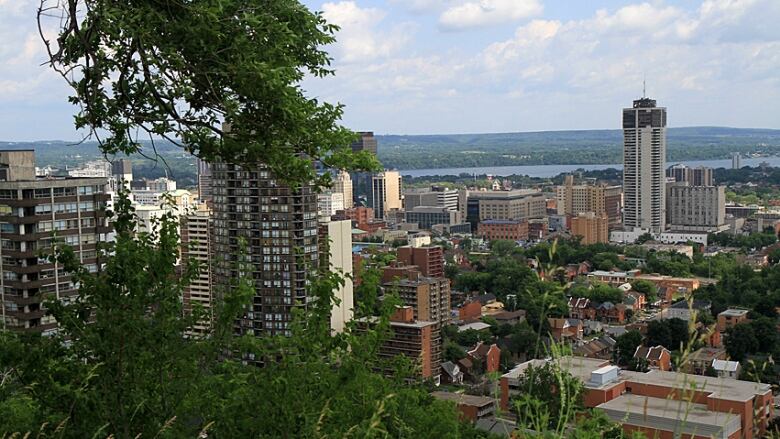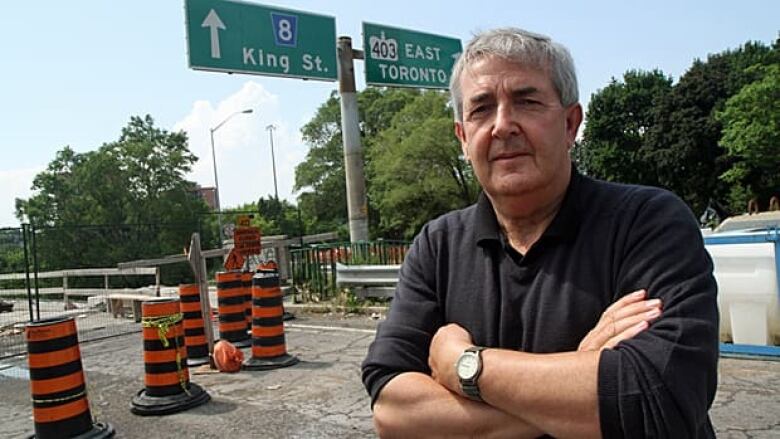Lost industry brings job losses but better air quality

When it comes to air quality in Hamilton, theres good news and there's bad news.
The good news? Hamiltons air quality has been dramatically improving since the mid-1990s, and continued to improve in the last year. Fewer Hamiltonians are also dying prematurely from bad air quality 229 deaths in 2003 compared to 186 in 2012.
The bad news? Some of that improvementis because the city has lost industry and manufacturing jobs.
The plus is that it improves air quality. The downside is the effect on the economy.- Lynda Lukasik, Environment Hamilton
Clean Air Hamilton will present its annual report to the citys board of health on July 10. The report shows dramatic improvements yet again in Hamiltons air quality, with decreases in toxic emissions such as benzene, sulphur dioxide and particulate matter.
There are numerous reasons for the better air quality tighter U.S. regulations, better emissions standards for local vehicles and industry, and other factors, said Denis Corr, chair of Clean Air Hamilton.
And one of them is a decline in industry.
- RELATED:Air quality stations disappearing from Hamilton industrial areas
- RELATED:10 facts about air quality in Hamilton
Most pollutants have decreased between 30 and 50 per cent since the 1990s. Most stark is a common industry-related violator benzene and benzo-a-pyrene, which has decreased 75 per cent since the late 90s.
Lynda Lukasik, executive director of Environment Hamilton, said economic hits such as U.S. Steel shuttering its Hamiltonblast furnace play a part.

Without a doubt, weve lost manufacturing facilities in this community, she said. The plus is that it improves air quality. The downside is the effect on the economy.
Corr will present the 2013 report to the citys board of health. Clean Air Hamilton is funded by the city ($56,000), Green Venture and in-kind time by volunteers.
About half of Hamiltons air pollution comes from the U.S., so that country tightening its regulations on industrial and coal-powered emissions is a factor, Corr said. Hamiltons highways continue to produce some of the worst emissions, and that hasnt changed from previous years.
But loss of industry matters, he said.
Downward trends
If you focus in on the last few years and you see the trends, theres a real dip down around 2008, he said. That is a combination of industry and really a North America-wide slow down.
In Hamilton, between 2003 and 2013, the number of people employed in manufacturing fell by about 35,000 peopleto 45,000 from 80,000.
Other highlights from the report:
- Hamilton has seen a 55-per cent reduction in total suspended particulate since the mid 1990s.
- Theres been a 47-per cent decline in nitrogen dioxide.
- Its seen a 38-per cent decline in sulphur dioxide.
- Theres been a more than 75-per cent reduction in both benzene and benzo-a-pyrene, seen as some of the most noxious industry-related chemicals.
- Hamilton saw fewer smog advisory than the year before, and about the same number of poor air quality days. The peak between 1996 and 2013 was 2005, when there were 45 smog days and 20 poor air quality days.
Premature deaths in Hamilton from bad airhave also decreased over the years, from 229 in 2003 to 186 in 2012.
Monitoring concerns
Corrs report recommends working with remaining industry and the province to control sources of air particulate pollution, particularly road dust.
It also recommends expanding air-monitoring efforts.
Air monitoring has been an issue lately. The industry-run Hamilton Air Monitoring Network has seen a shortfall in recent years. Industry participation is not mandatory, and more industries have been dropping off or withdrawing their funding.
The most recent loss was Liberty Energy, which withdrew its funding of a McAnulty Boulevard-area air-monitoring station. ArcelorMittal Dofasco is now funding the station.
Overall, Corr said, Hamilton's air quality is on par with the rest of the province.












_(720p).jpg)


 OFFICIAL HD MUSIC VIDEO.jpg)
.jpg)



























































































